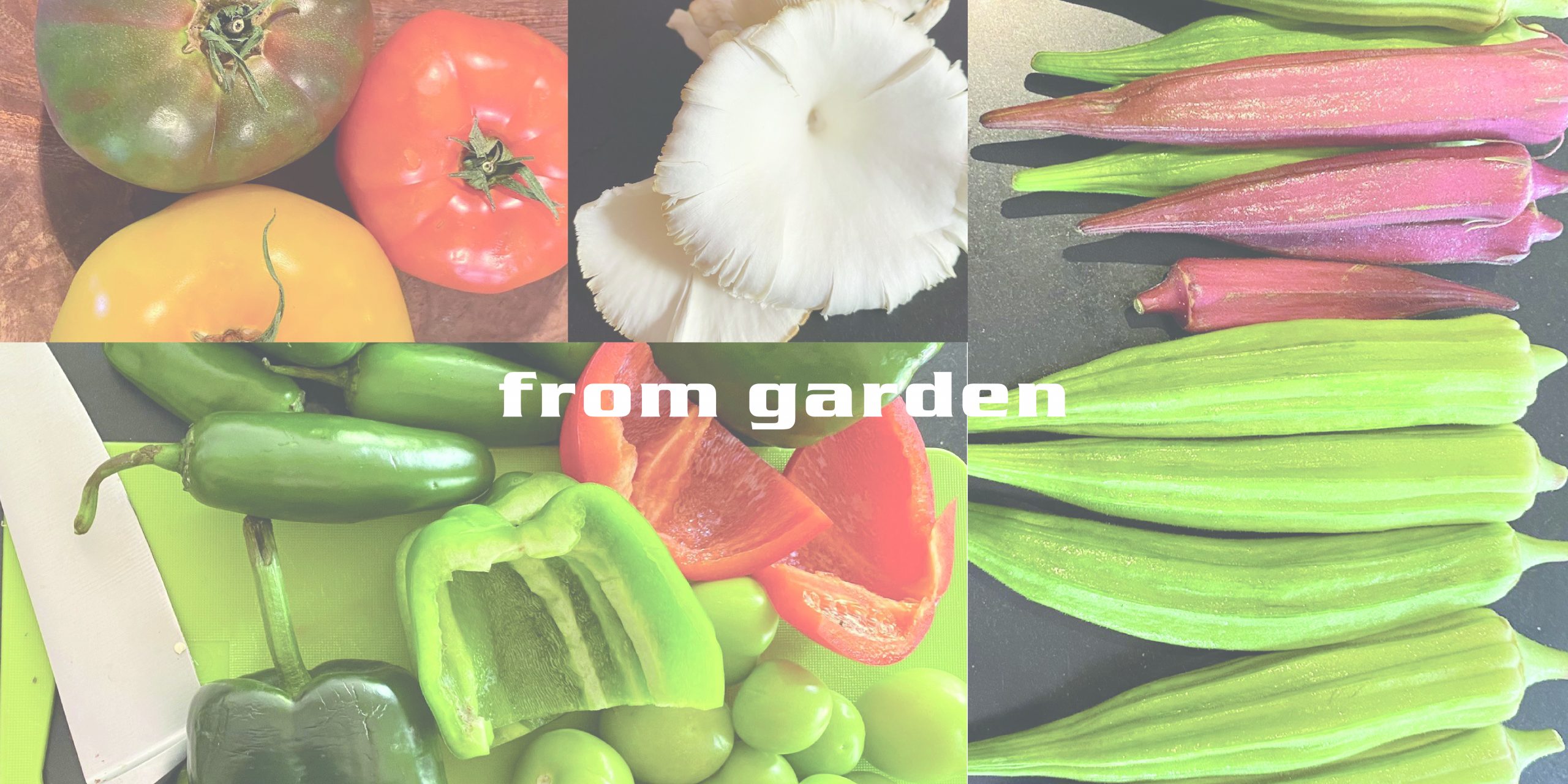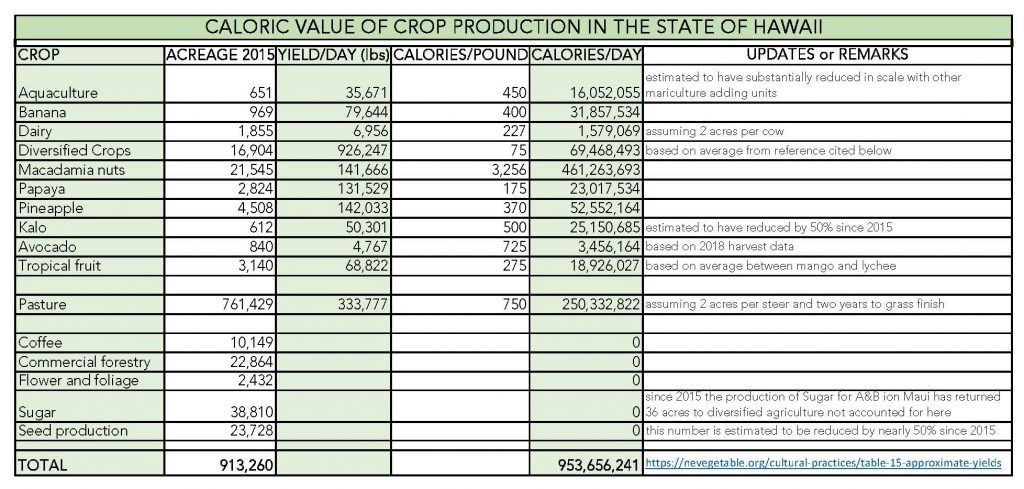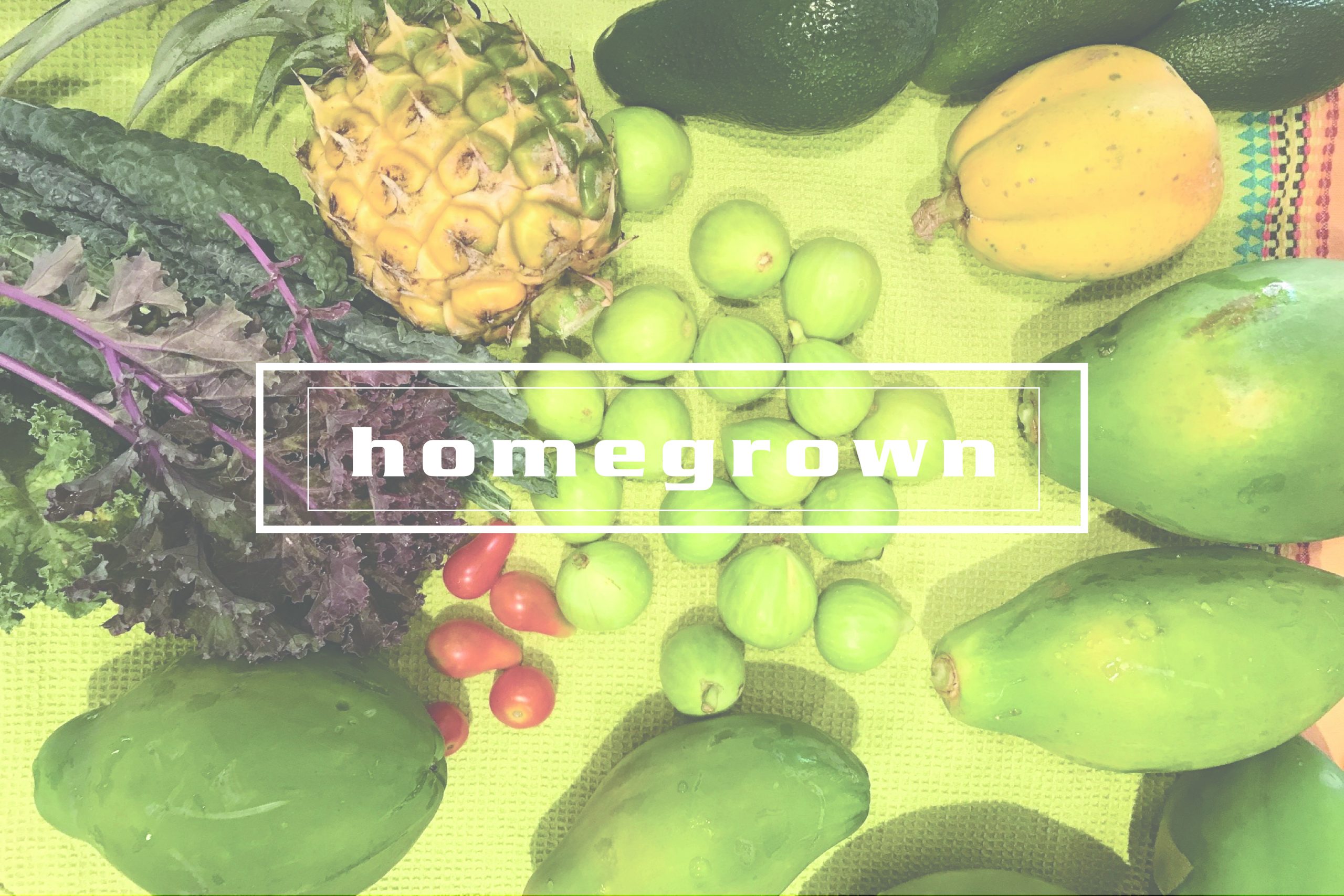I am an informed consumer and not an expert but strongly believe that a commitment to food and water sustainability is crucial to the future of our state. I hope we will all contribute to the best of our ability to address this essential need.
What’s keeping me awake at night? Thinking about food! No, not the “too much pepperoni pizza too late” kind of food issue, but what might happen to our islands if our supply chain were interrupted. As I understand it, Hawaiʻi currently imports 85 percent of its food.
I like food. I like to eat it, cook it, and I even grow some of my own. What if we as a state could only eat what we grow? What would it taste like? Would there be enough?


I began studying this issue about 15 years ag. I wanted to see how much of my food could be grown locally. I am not a vegetarian, but my diet is largely plant based, so getting enough variety of vegetables was never a problem. What was missing was cooking oil. This has been rectified with the advent of macadamia nut and sunflower oils., which are excellent for salad dressing and sautéing. I personally know two people who grow and process olive oil up country. Although expensive, locally sourced meat is now readily available. Salt and seasonings abound. There is even chocolate and vanilla and gorgeous mushrooms to be had.
As the daughter of a Kansan, I need flour (wheat), the same way so many people in Hawaiʻi need rice. Although rice was grown in Hawaiʻi in the late 1800’s, there is no current production. I have discovered a few interesting flour alternatives. I have been baking with sweet potato, macadamia nut, and kiawe bean flour, as well as gorgeous locally milled cornmeal. I have yet to use ulu flour, but I am hoping to try some soon.
Prior to western contact Hawaii was estimated to have somewhere between 150,000 to 1.5 million inhabitants, a vague estimate that spans an entire order of magnitude. But if we take a median number and conjecture that there were about 750,000 individuals on the various inhabited islands, that would amount to half of our current population. Since these inhabitants were 100 percent sustainable in their food gathering and growing, it makes me think that with modern technology and general know-how we could be sustainable ourselves.
Agriculture in Hawaii is constantly evolving but information is slow to be gathered and disseminated. Many of us were here during the gradual end of the plantation era, when sugar and pineapple crops dominated the landscape and farming was the purview of large landholders. But the collapse of the sugar and pineapple industry could usher in a more diversified agriculture has to help create a sustainable food industry in Hawaiʻi.
The most recent data I could find is from 2015 and I sense that a lot of change has taken hold since then, but the data provides some statistical background for how to think about sustainability now. I am only going to use round numbers for sake of estimating.
Does Hawai’i’s current crop production produce enough caloric value?
According to the FDA, an average person needs 2,000 calories per day. For a population of 1.5 million, the combined caloric need is three billion calories per day. The state contains almost 2 million acres of zoned agricultural land but only about one million acres are in actual agricultural use according to the 2015 Statewide Agricultural Use Baseline. Of that total, over 75 percent is in pasture. Another 2.5 percent is in forest or flower, foliage, or landscape. That leaves only about 125,000 acres for diversified agriculture to support our food needs.
One acre of kalo can produce about 30,000 pounds of product in a year. One pound of kalo provides about 500 calories. By extrapolation that would mean that if our entire population ate nothing but kalo our caloric need could be met by about 75,000 acres, or a little over half of the acreage we currently have in all diversified production. None of us wants to eat only kalo, but it is encouraging that it feels achievable to supply enough food to feed our state.
To estimate the total number of calories provided by our current acreages and crops being grown on them, I researched the data at a level deep enough to satisfy my curiosity and allow me to make my own informed guesses. I am not an expert, however, looking at the attached chart, it appears that we can only generate 65 percent of the food we need using our current strategies, even with using ALL the land available to us.
If you are interested in reading, I recommend visiting the Hawaiʻi Department of Agricultureʻs website and reading a series of articles on food sustainability from Civil Beat.

The most startling information is that half of the calories produced come from macadamia nuts.
Agriculture is a complex system of land, water, labor, and weather. It is affected by politics. Performance is inconsistent, and circumstances are unpredictable. Food is perishable and finding ways to store and distribute it is almost as important as growing it. During the pandemic I began to have locally sourced food delivered by one of the Community Supported Agriculture (CSA) programs, Farmlink Hawaiʻi. It has given me easy access to many locally grown and produced food items. But if we are to be truly sustainable, we need to look at allocating land and water. Differently. We must study and adapt the indigenous cultural practices that allowed the Hawaiian community to thrive while we also look for innovation and resilience.
Global warming and sea level rise will change the climate and the land available for crops. Planting more forest in the abundance of pastureland might be a strategy. Adopting mariculture in more of our coastal plain might help with sea level rise.
My hope is that we can develop a sustainable food system that will allow us to balance our imports and exports and enjoy those exotic things like rice and wheat while sharing our mac nuts and pineapples. In the event of a catastrophe, we would then also have enough food to sustain ourselves with plenty of variety for good nutrition.
